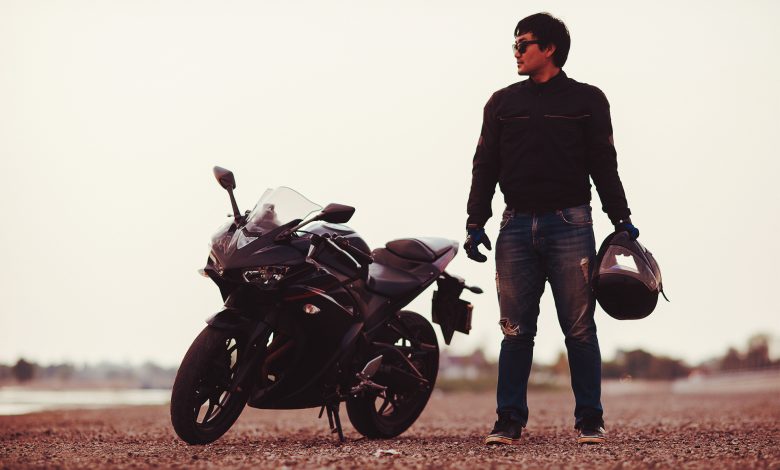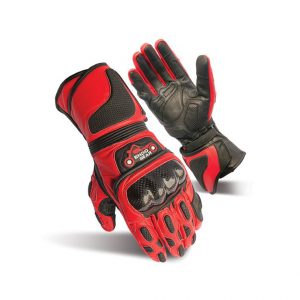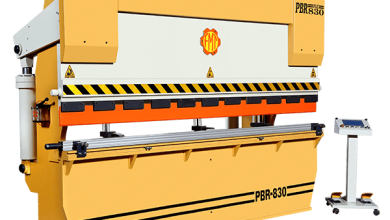Motorcycle Gloves Types and Size Selection

Good gloves are not only protection but also comfort during the trip. The wrong size of gloves gets in the way while riding, and will not provide protection. With the help of this article, you will learn to understand the types of motorcycle gloves, determine which size is right for you, and you can buy the perfect gloves for yourself. Let’s go!
Material:
Discuss What material are gloves made of?. We can divide them into three types: leather, textile, and combined.
Leather Motorcycle Gloves:
Leather is a timeless classic that accompanied the first motorcycles from the earliest days. And for good reason: the leather is reliable and durable, and with a suitable size sits comfortably. No wonder they say “sits like a second skin”– it’s just about her. The point is that leather motorcycle gloves can take the shape of your hands, and a well-fitting pair of gloves is one of the most pleasant sensations that motorcycle protective gear can provide.
Leather is usually the most expensive material option. But its water resistance is not at the highest level, and it is poorly suited as an all-weather option. On cold days, The skin practically does not warm, and on hot days. It is not ventilated, and when choosing leather for everyday use, be prepared to have three pairs of gloves, lined, regular and perforated. And one more thing: only leather outfit is suitable for serious riding on the track.

Textile Motorcycle Gloves:
Modern fabrics allow manufacturers to make gloves for all conditions. The best waterproof motorcycle gloves are made from textiles. Whether I travel in bad weather, hot weather, and cold weather – there are suitable textile gloves in my closet. Also, textiles are as versatile as possible, so if you are looking for one glove for any riding conditions, take textile motorcycle gloves. Keep in mind that textiles are not able to wear out as well as leather, so if the glove does not fit well in the store, it will be just as uncomfortable over time. It is also worth considering that in some warm gloves the lining is quite thick.
Combine Leather + Textile Gloves
Leather has its own advantages, textiles have their own. Why not combine them? Combo gloves usually have leather in the areas that suffer from slipping, and in the rest, they consist of textiles. Thanks to this, they can be waterproof, have rubber cuffs, a warm lining, or vice versa, a mesh for improved airflow. Combination gloves combine the best of both worlds and are definitely worth a look.
What Types of motorcycle gloves do you need?
Different riding styles and tasks dictate different requirements for gloves, so there are quite a few varieties of gloves. And this is good because you can choose the type of gloves that is most comfortable for you. Motorcycle gloves are divided into five main categories. Road, sim racing gloves, Touring, and mud gloves.
Road Gloves
If you primarily ride a road bike, road gloves are probably the right choice for you. Some of them are a little more athletic, others are more classic, but on the whole, the essence is the same: they have cuffs shortened for convenience and some kind of impact protection. Touchscreen support is another common feature in many models as many riders use capacitive touchscreen devices on the go for navigation and multimedia. Traveling gloves are made of three material options.
Racing motorcycle gloves
This category is for aggressive track driving. They are made of leather and have a cuff of maximum length that covers the arm almost to the elbow. Such a cuff prevents the glove from slipping in a collision and may have additional protective elements. This type of motorcycle gloves have knuckle protection, reinforced pinky, and other trekking features. They are usually more expensive than other options due to their more professional use.
Touring gloves
The versatility of travel gloves can hardly be overestimated. They usually have a full gaiter, but there are also shorter versions. Usually, these are textile or textile-leather gloves. Depending on the budget and preferences, these can be both simple and sophisticated models using the latest materials and technologies for a lot of money. True, they are usually worth every penny spent once the trip takes place in less than ideal conditions. Even when I wear a pair of travel gloves on a trip, the warm and water-resistant touring gloves are in my trunk. And they helped me out more than once.
Motorcycle Gloves for Tours
Travelers who prefer to ride on rough terrain have their own ideas and needs in terms of gloves. These short gloves are usually a combination of textile and leather. The main feature is that they are minimally restrictive. Because riding on rough terrain requires frequent changes in position and riding in a stance, and long or stiff gloves will interfere with motorcycle control. This is why you should have a good set of armored motorcycle riding. Because falls are not uncommon even when driving quietly off-road.

MUD Gloves
They are short, lightweight, and offer maximum sensitivity at the cost of no protection. As a result, they are generally not suitable for road use. Endurists prioritize control and mobility, making these thin and thick gloves ideal for most tasks. Due to their thin structure and harsh conditions of use, mud gloves last a season or two. Fortunately, this is the cheapest glove category.
Landing Motorcycle Gloves
There are two standards for the fit of gloves – American and European. It is usually easy to understand how a glove of one size or another will fit by knowing where the manufacturer is located. Most American gloves have a loose fit in the palm and fingers, and the fingers themselves are somewhat shorter. European ones, on the contrary, have long fingers, but the glove sits a little tighter. In any case, the gloves should fit snugly but not tightly, the fingers should enter the tips of the gloves, and there should not be too much loose material anywhere.
How to choose the size of motorcycle gloves
So, you’ve already chosen a glove style that suits your riding style, and you’ve decided whether an American or European fit will suit your wrists best. Time to find out the size. Take a palm measure tape. If you don’t have a tape measure, use a piece of inelastic thread or rope and a ruler. Open the size chart of the selected brand and see what size the manufacturer uses – the width of the palm or its circumference.

To measure the width, place a measuring tape or ruler on a table and place your palm on it. Measure the widest part of your palm and repeat for the other hand. It is usually worth taking the largest result you have obtained.
If the model of gloves you have chosen has a size chart with a circumference measurement, wrap a measuring tape around your palm just under the knuckles, and pull it up without pinching your hand. The palm-width thumb is not to include now look for your size in the table.
Great, I Have the Gloves what’s Next?
Put them on and get on the motorcycle. Play around with remotes and levers, and crank the throttle to make sure all manual controls are accessible. Doesn’t it press anywhere it pulls and Does not it squeeze? If the gloves are a little tight, keep in mind that the skin can stretch by 10-15% after 15-20 hours of driving.





